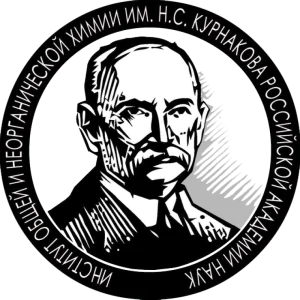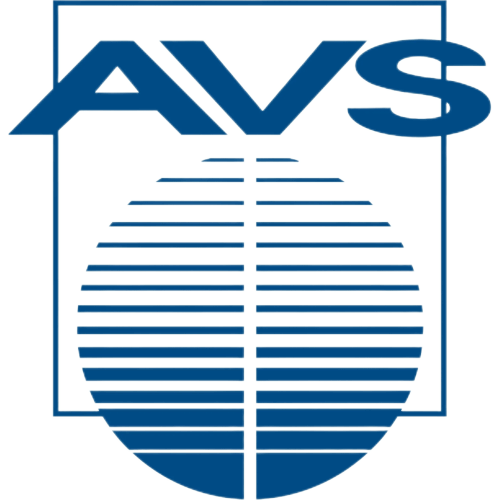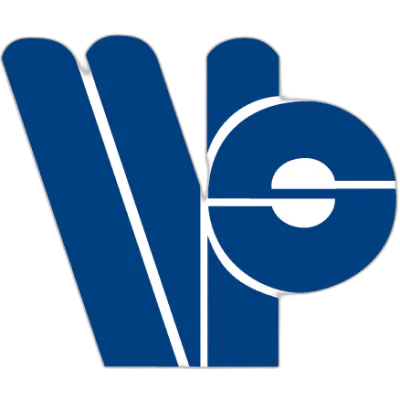Insights into the Performance Limits of the Li7P3S11 Superionic Conductor: A Combined First-Principles and Experimental Study.
Iek-Heng Chu
1
,
Han Nguyen
1
,
Sunny Hy
1
,
Yuh-Chieh Lin
1
,
Zhenbin Wang
1
,
Zihan Xu
1
,
Zhi Deng
1
,
Ying Meng
1
,
Publication type: Journal Article
Publication date: 2016-03-17
scimago Q1
wos Q1
SJR: 1.921
CiteScore: 14.5
Impact factor: 8.2
ISSN: 19448244, 19448252
PubMed ID:
26950604
General Materials Science
Abstract
The Li7P3S11 glass-ceramic is a promising superionic conductor electrolyte (SCE) with an extremely high Li(+) conductivity that exceeds that of even traditional organic electrolytes. In this work, we present a combined computational and experimental investigation of the material performance limitations in terms of its phase and electrochemical stability, and Li(+) conductivity. We find that Li7P3S11 is metastable at 0 K but becomes stable at above 630 K (∼360 °C) when vibrational entropy contributions are accounted for, in agreement with differential scanning calorimetry measurements. Both scanning electron microscopy and the calculated Wulff shape show that Li7P3S11 tends to form relatively isotropic crystals. In terms of electrochemical stability, first-principles calculations predict that, unlike the LiCoO2 cathode, the olivine LiFePO4 and spinel LiMn2O4 cathodes are likely to form stable passivation interfaces with the Li7P3S11 SCE. This finding underscores the importance of considering multicomponent integration in developing an all-solid-state architecture. To probe the fundamental limit of its bulk Li(+) conductivity, a comparison of conventional cold-press sintered versus spark-plasma sintering (SPS) Li7P3S11 was done in conjunction with ab initio molecular dynamics (AIMD) simulations. Though the measured diffusion activation barriers are in excellent agreement, the AIMD-predicted room-temperature Li(+) conductivity of 57 mS cm(-1) is much higher than the experimental values. The optimized SPS sample exhibits a room-temperature Li(+) conductivity of 11.6 mS cm(-1), significantly higher than that of the cold-pressed sample (1.3 mS cm(-1)) due to the reduction of grain boundary resistance by densification. We conclude that grain boundary conductivity is limiting the overall Li(+) conductivity in Li7P3S11, and further optimization of overall conductivities should be possible. Finally, we show that Li(+) motions in this material are highly collective, and the flexing of the P2S7 ditetrahedra facilitates fast Li(+) diffusion.
Found
Nothing found, try to update filter.
Found
Nothing found, try to update filter.
Top-30
Journals
|
2
4
6
8
10
12
14
16
|
|
|
Chemistry of Materials
15 publications, 7.46%
|
|
|
Journal of Materials Chemistry A
15 publications, 7.46%
|
|
|
Journal of Power Sources
14 publications, 6.97%
|
|
|
ACS applied materials & interfaces
12 publications, 5.97%
|
|
|
Journal of Physical Chemistry C
8 publications, 3.98%
|
|
|
Advanced Energy Materials
7 publications, 3.48%
|
|
|
Chemical Reviews
6 publications, 2.99%
|
|
|
ACS Applied Energy Materials
5 publications, 2.49%
|
|
|
Energy and Environmental Science
5 publications, 2.49%
|
|
|
Energy Storage Materials
5 publications, 2.49%
|
|
|
Chemical Engineering Journal
4 publications, 1.99%
|
|
|
Advanced Materials
4 publications, 1.99%
|
|
|
Journal of the American Chemical Society
4 publications, 1.99%
|
|
|
ACS Energy Letters
3 publications, 1.49%
|
|
|
Physical Review Materials
3 publications, 1.49%
|
|
|
Electrochemical Energy Reviews
3 publications, 1.49%
|
|
|
Solid State Ionics
3 publications, 1.49%
|
|
|
Journal of Physical Chemistry Letters
3 publications, 1.49%
|
|
|
Physical Chemistry Chemical Physics
3 publications, 1.49%
|
|
|
Nanomaterials
2 publications, 1%
|
|
|
npj Computational Materials
2 publications, 1%
|
|
|
Scientific Reports
2 publications, 1%
|
|
|
Cell Reports Physical Science
2 publications, 1%
|
|
|
Rare Metals
2 publications, 1%
|
|
|
Nano Letters
2 publications, 1%
|
|
|
Advanced Ceramics
2 publications, 1%
|
|
|
Journal of Energy Storage
2 publications, 1%
|
|
|
Advanced Functional Materials
2 publications, 1%
|
|
|
Small
2 publications, 1%
|
|
|
2
4
6
8
10
12
14
16
|
Publishers
|
10
20
30
40
50
60
|
|
|
American Chemical Society (ACS)
60 publications, 29.85%
|
|
|
Elsevier
49 publications, 24.38%
|
|
|
Royal Society of Chemistry (RSC)
25 publications, 12.44%
|
|
|
Wiley
23 publications, 11.44%
|
|
|
Springer Nature
15 publications, 7.46%
|
|
|
American Physical Society (APS)
5 publications, 2.49%
|
|
|
MDPI
4 publications, 1.99%
|
|
|
AIP Publishing
3 publications, 1.49%
|
|
|
IOP Publishing
3 publications, 1.49%
|
|
|
American Association for the Advancement of Science (AAAS)
2 publications, 1%
|
|
|
American Vacuum Society
1 publication, 0.5%
|
|
|
World Scientific
1 publication, 0.5%
|
|
|
The Electrochemical Society
1 publication, 0.5%
|
|
|
Nonferrous Metals Society of China
1 publication, 0.5%
|
|
|
Cambridge University Press
1 publication, 0.5%
|
|
|
Chinese Ceramic Society
1 publication, 0.5%
|
|
|
Taiwan Institute of Chemical Engineers
1 publication, 0.5%
|
|
|
Japan Society of Applied Physics
1 publication, 0.5%
|
|
|
Walter de Gruyter
1 publication, 0.5%
|
|
|
Emerald
1 publication, 0.5%
|
|
|
Autonomous Non-profit Organization Editorial Board of the journal Uspekhi Khimii
1 publication, 0.5%
|
|
|
10
20
30
40
50
60
|
- We do not take into account publications without a DOI.
- Statistics recalculated weekly.
Are you a researcher?
Create a profile to get free access to personal recommendations for colleagues and new articles.
Metrics
201
Total citations:
201
Citations from 2024:
40
(19.9%)
Cite this
GOST |
RIS |
BibTex |
MLA
Cite this
GOST
Copy
Chu I. et al. Insights into the Performance Limits of the Li7P3S11 Superionic Conductor: A Combined First-Principles and Experimental Study. // ACS applied materials & interfaces. 2016. Vol. 8. No. 12. pp. 7843-7853.
GOST all authors (up to 50)
Copy
Chu I., Nguyen H., Hy S., Lin Y., Wang Z., Xu Z., Deng Z., Meng Y., Ong S. P. Insights into the Performance Limits of the Li7P3S11 Superionic Conductor: A Combined First-Principles and Experimental Study. // ACS applied materials & interfaces. 2016. Vol. 8. No. 12. pp. 7843-7853.
Cite this
RIS
Copy
TY - JOUR
DO - 10.1021/acsami.6b00833
UR - https://doi.org/10.1021/acsami.6b00833
TI - Insights into the Performance Limits of the Li7P3S11 Superionic Conductor: A Combined First-Principles and Experimental Study.
T2 - ACS applied materials & interfaces
AU - Chu, Iek-Heng
AU - Nguyen, Han
AU - Hy, Sunny
AU - Lin, Yuh-Chieh
AU - Wang, Zhenbin
AU - Xu, Zihan
AU - Deng, Zhi
AU - Meng, Ying
AU - Ong, Shyue Ping
PY - 2016
DA - 2016/03/17
PB - American Chemical Society (ACS)
SP - 7843-7853
IS - 12
VL - 8
PMID - 26950604
SN - 1944-8244
SN - 1944-8252
ER -
Cite this
BibTex (up to 50 authors)
Copy
@article{2016_Chu,
author = {Iek-Heng Chu and Han Nguyen and Sunny Hy and Yuh-Chieh Lin and Zhenbin Wang and Zihan Xu and Zhi Deng and Ying Meng and Shyue Ping Ong},
title = {Insights into the Performance Limits of the Li7P3S11 Superionic Conductor: A Combined First-Principles and Experimental Study.},
journal = {ACS applied materials & interfaces},
year = {2016},
volume = {8},
publisher = {American Chemical Society (ACS)},
month = {mar},
url = {https://doi.org/10.1021/acsami.6b00833},
number = {12},
pages = {7843--7853},
doi = {10.1021/acsami.6b00833}
}
Cite this
MLA
Copy
Chu, Iek-Heng, et al. “Insights into the Performance Limits of the Li7P3S11 Superionic Conductor: A Combined First-Principles and Experimental Study..” ACS applied materials & interfaces, vol. 8, no. 12, Mar. 2016, pp. 7843-7853. https://doi.org/10.1021/acsami.6b00833.




















